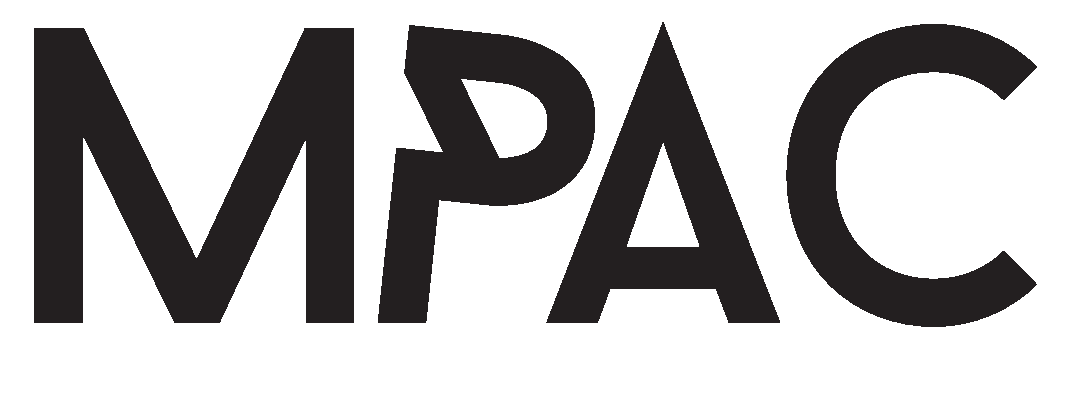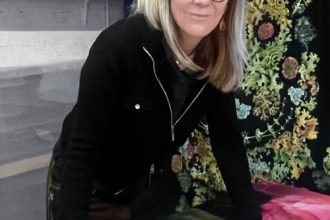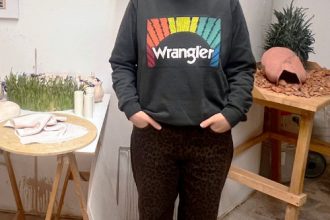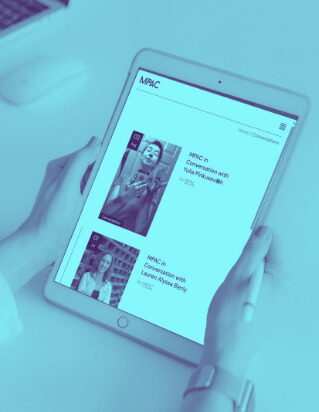The Art Market Now: Love is Not in the Air!
“Is the halt on big spending an art historical correction or a strategy to preserve wealth? Here is what you should know about the current art market.”

Sibel Kocakaya. Untitled, 2016. Photograph, 70×100 cm. Courtesy of the artist.
“Choppy Waters1,” “Market Chill,2” “The Art Market Reset3,” and “Market Disaster4” are some of the most recent headlines on the art market’s gloomy performance of the current year. Reports on significant drop in sales, closures of dozens of galleries including blue chip galleries in major art market hot spots5 and announcements of employee layoffs6 send waves of anxiety across the market.
Both Sotheby’s and Christie’s reported a significant drop in sales for the first half of the year. Sotheby’s sales were down by 25% and Christie’s by 22% compared to the same period of the previous year.7 The mid-year review of the Artnet Intelligence report highlighted an overall drop of 29% of sales for auction houses worldwide. On average, dealers account for 55% of the annual sales and auction houses account for 45%.8 Together, Sotheby’s and Christie’s accounted for approximately 20% of sales9 based on the last eight years of art market data.
Thus far, reported results are mostly driven by the loss of sales on the high end of the market. Collectors are no longer willing to spend what they did in the previous years. The downhill trend was already visible in 2023, but the impact was less severe with only a 4% decrease in annual sales.10 Is this a moment of realization that the desire to own the same artists’ works for the same unique lots for over inflated prices has finally come to an end? Or is this a prolonged period of stagnation? “The art market more than almost any other industry is shaped by sentiment” says Naomi Rea, Art New’s Editor-in-Chief.11 And that sentiment for the collectors has been “uncertainty” for the last 18 months or so.
Numbers Do Matter
Ongoing wars, high inflation, interest rates of 5% (recently cut by 50 basis points to 4.75%)12 and a record-breaking year for elections with 49% of the world’s population voting in 64 countries13 fueled an environment of uncertainty across markets. These conditions have especially impacted the art market and the high-net-worth collectors.
Not every industry has been impacted the same way. According to a recent market study by Altagamma-Bain, luxury goods still continued to grow by 4% in the first half of 2024.14 The world’s largest luxury goods company, LVMH reported a resilient growth of 2% for the first half year, with some of its categories reaching a growth of 8%.15 This suggests that high net worth individuals continue to spend but selectively, and as evidenced with the recent reported numbers, not in the art market. So, why are collectors acting with more caution when it comes to art spending?
High interest rates have been a major factor preventing collectors from making high value purchases due to increased costs of borrowing and recent reduction may impact the full year results positively. But even in the absence of a major political or economic crisis, collectors are always in need of assurance before making acquisitions. The art market functions through secrecy, lack of regulations and lack of transparency, further intensified with a great absence of reporting compared to any other industry. Neither collectors nor we know what happens within the closed doors of auction houses and dealers, which are all privately owned. They are under no obligation to publish their numbers extensively or publish them at all. Moreover, when in doubt, the collectors tend to stick to artforms and artists that they consider less risky. This trend is already identifiable in last year’s results. The sales share of traditional art mediums such as paintings, sculptures and works on paper combined increased by 4% last year, totaling to 86% in an environment where global sales for the dealer’s segment decreased by 3%.16
Despite a decline in sales at the upper high end of the market, dominated by blue chip galleries and top-tier auction houses, the low and middle segments of the market experienced a surge in sales in 2023.17 For example, sales of dealers with turnover of less than $500k had increased by 12%. Prior to 2023, the sales value of low-end and mid-market had been in a trend of shrinking.18 Nevertheless, the combined gains of the low and mid-market segments were not enough to offset the losses at the upper market, resulting in an overall 4% drop in market sales for 2023.19 In the first half of 2024, auction sales shrank in all categories of era and price segments, reports Margaret Carregan on her data dive for the Artnet Mid-Year Review.20 However, the lower end of the market had the smallest drop in sales, at 16.3% compared to the 40.9% drop at the higher end.21

Eleonora Meier. The Softest Hard #3, 2023. Watercolor and pencil on paper. 230x140cm. Courtesy of the artist.
The Low and mid segments of the market represent a more democratic delegation of artists. Representation of female artists for galleries with turnover of $250K was 47%22 in 2023, while at the highest end of the market for galleries with a turnover of $10 million, the percentage dropped to 35%.23 Representation and sales of female artists decrease as we move up to the high-end of the art market, evident in all segments of the market, whether it is primary or secondary, but it is especially evident in the auctions section, where female artists’ works accounted for only 9% of the sales in 2022.24
Another significant decline occurred in the ultra-contemporary category, a term defined by Artnet for artists born in or after 1975.25 Sales in this category dropped by 39%.26 While the ultra-contemporary category has lower total sales compared to others, it has also seen one of the most significant financial improvements for female artists in the last years with a sales increase of 349% between 2020-2022.27 According to “The Women Artists Report 2024” of Artsy which focuses on analyzing auction data, the younger the artists are, the greater the balance of commercial interest across genders.28 Female artists’ work accounted for 44% for the ultra-contemporary category in 2023, and when narrowed down further to artists born in or after 1985, female artists’ work counted for 63% of auction sales.29 Another significant finding of this report is for Gen Z artists born with an average year of 1988. Almost all artists in this category focus in part on figurative painting and there is a strong representation of female artists from the African continent.30
Despite the art market’s inherent resistance to change and its tendency to showcase and resell works by same artists, the success of younger era artists is an important statistical trend that is emerging. The most searched artists in the auctions section in the last 18 years (or since the report’s inception), have been consistently the same: Pablo Picasso, followed by Andy Warhol.31 The dominance of the star artist is also evident in the dealer sector, where 53% of sales revenues in 2023 came from the top three selling artists and 33% of the sales came from the single artist alone.32
The Ultimate Secrecy of the Art Market
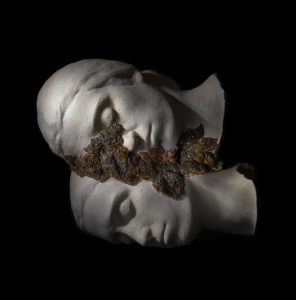
Manolya Çelikler. Hatırlıyorum (I remember), 2024. Ceramic, 30x27x17cm. Courtesy of the artist.
How are the figures on female artist representation and sales from top selling artists progressing in the dealer’s section of this year? Publicly available market data on galleries is even more limited compared to auction results, with most information remaining private and shared only through personal contacts with journalists. Additionally, there is no available data on BIPOC artists and artists identifying as non-binary or other. Reporting on the art market is a challenging task. Within the handful of available reports, the methodologies and purposes greatly differ. Most comprehensive publicly available art market report is the annual “The Art Market Report” by Dr. Clare McAndrew and her team at Arts Economics.33 Her meticulous report based on a global survey has been commissioned by Art Basel & UBS since 2016. It is the only publicly available report that gives extensive data on both dealers and auctions sectors, and it enables us to make year-to-year comparisons, follow trends and identify changes at a global level. As importantly, Dr. McAndrew’s efforts shed much light on the prevailing gender gap in the market.
Nevertheless, investigating issues in underrepresentation or increasing transparency in the art world are not the goals of the publicly available reports, which primarily focus on tracking sales data as well as collector spending habits. For example, 43% of the high-net-worth collectors had used credit to purchase art in 2023 versus 30% in 2022.34 “The ability of HNWIs (High Net Worth Individuals) to leverage their wealth, borrowing against their assets to pay for new purchases and reinvest in other assets which return more than the cost of borrowing, is a key strategy for maintaining and expanding wealth” underlines Dr. McAndrew.”35 French billionaire Patrick Drahi, who acquired Sotheby’s in 2019 exemplifies this approach. He built his media and telecom empire through borrowing strategies, taking advantage of low-interest rates. However, his companies are now facing difficulties due to being $60 billion in debt. In August, the Abu Dhabi based sovereign wealth fund ADQ agreed to take a minority stake in Sotheby’s by investing $1 billion.36
UBS, commissioner of Art Market report, manages the wealth of the largest number of billionaires in the world.37 Billionaire wealth has more than doubled in the last decade and has supported the art market recovery after the pandemic. Currently there are already 141 more billionaires than last year, despite the political unrest, ongoing wars and lingering inflation, bringing the number to a total of 2,781 billionaires.38 UBS’s “Global Wealth Report of 2023” further emphasized this trend, forecasting a 38% growth in global wealth over the next five years.39 Art collecting presents opportunities for UBS to strengthen relationships with these high-net-worth individuals and their families who at some point will replace their predecessors.
Key art market players also strive to reach the same target audiences as UBS. Mega gallery Hauser & Wirth, with estimated annual sales exceeding $1 billion and a global presence of 19 locations, represents over 100 artists and estates, but keeps its revenue figures confidential.40 It also owns the hospitality group Artfarm, which manages the exclusive Groucho Club in London with over 5000 members, the five-star hotel The Five Arms in Scotland and various restaurants in strategically located thriving art districts worldwide.41 Hauser & Wirth further expands its reach by collaborating with smaller galleries through the Collective Impact model, reported in late 2023.42 As announced by the mega dealer, this model aims to support a thriving art market ecosystem by supporting smaller size galleries.43 One could argue that the model also benefits Hauser & Wirth by reducing its market risk through diversification into the mid and low ends of the market, particularly during periods when the high-end market experiences challenges.
Art Market 101 and Why You Need to Know It

Elisabeth Eberle. LOCKDOWN selfies series, 2020. Photograph, 42x30cm. Courtesy of the artist.
Understanding the size of mega-galleries like Hauser & Wirth is crucial when considering the overall art market. Art market is a relatively small industry. There are over 300,000 businesses operating in the global art and antiques business with over 3 million employees.44 The highest sales achieved in the art market in the last 10 years was $68.2 billion in 2014. The lowest annual sales achieved was $50.3 billion in 2020 during the pandemic, but the market recovered in the following two years reaching annual sales of $67.8 billion in 2022.45 Tik Tok which is a privately owned company has estimated global revenues of $120 billion,46 almost double the size of the whole art market. The high end of the art market is dominated by a handful of mega size galleries and top-tier auction houses. However, the mid and low segments are more complex, layered, and diversified in means of revenues, number of lots sold, gender representations, mediums of art and geographical representations.
“I am not part of the art market, or I live in a far-removed city outside of the major art market centers so why should I care about the global art market which I feel alienated from?” you may ask. Indeed, you are right as “none of us lives in a global system: we live in places” says Anna Tsing in her essay “Earth Stalked by Man.”47 We live on the uneven and unequal terrains of earth she calls “patchy landscapes.”48 These landscapes are shaped by the constant production of resources and future assets through replications and through producing the future model of what we call progress, explains Tsing. But the process of replication lacks a major element: “accountability.”49 You are already part of these replications from the uneven, patchy landscapes that you are located in. Your surplus work is feeding the global taste-making machine. We can take all the information available to us, make it visible, make it available by adding our own network of situated knowledges from our own locations, which can only support in delegation of accountability. An intervention of this quality would then grant agency to collaborate wisely.
How will the art market further progress in the last quarter of this year? Will it recover the sales losses from the first half? Will the 50 basis points of reduction in interest rates encourage bigger spending? Can we expect continued growth in online sales channels throughout 2024? Online sales doubled in size during the pandemic, reaching a peak of 21% in 2023,50 even with the decline in high-end sales. Online sales platforms are crucial entry points for new collectors for both dealers and auction houses. This is particularly relevant for the Gen Z generation, who are projected to count for 25-30% of luxury purchases by 2030, alongside millennials, who will account for 50-55%.51
And how will all of this affect the art and the culture workers? Will art institutions, foundations as well as off-spaces adapt to fill these potential gaps, or will they remain alienated or further disengage from the art market and its implications?
My prediction is that if the auction houses cannot recover some of the loss of sales in the second half of the year and especially during the fourth quarter, the overall art market will shrink by 6-8% in 2024. This number is likely to increase with further declines in sales among the dealers section, which would significantly impact not only on art market employees, but also artistic creatives with gallery closures and further elimination of opportunities for already struggling artists. In response, art institutions and foundations should proactively adapt their strategies and use their funds to create opportunities for underrepresented artists, rather than simply mimicking traits of the art market.
- Georgina Adam, “Choppy waters ahead for the art market,” The Art Newspaper, September 5, 2024, accessed September 6.2024, https://www.theartnewspaper.com/2024/09/05/choppy-waters-ahead-for-the-art-market-art-market-eye ↩︎
- Robert Smith, “Sotheby’s earnings plunge as art market catches a chill”, Financial Times, August 30, 2024, accessed August 30, 2024, https://www.ft.com/content/89fd2c65-0dfd-4f3b-b357-95d1c83c92c9 ↩︎
- Artnet News Editorial Team, The Intelligence Report: Mid-Year Review of 2024, September 6, 2024, artnet.com, accessed September 7, 2024, https://news.artnet.com/market/introducing-the-intelligence-report-mid-year-review-2024-2531414, cover page and page 15 ↩︎
- Katya Kazakina, “Market Disaster” as part of article “Art Market Reset: Riding the Waves of Change” for The Intelligence Report, September 6, 2024, Artnet, accessed September 7, 2024, https://news.artnet.com/market/art-market-reset-riding-the-waves-of-change-2533656, 22 ↩︎
- Ibid, pg 17 ↩︎
- Melanie Gerlis, “Sotheby’s and Christie’s cut jobs in weak art market”, Financial Times, June 6, 2024, accessed September 1, 2024, https://www.ft.com/content/3d9b5daf-254b-477e-b18e-c9e33a3d299d
↩︎ - Ibid, Adam ↩︎
- Average of last 8 years sales data taken for this analysis based on Claire McAndrew, The Art Market Annual Reports from 2016 to 2024: An Art Basel and UBS Report (Basel: Art Basel and UBS)
↩︎ - Ibid, McAndrew, Analysis of the last 8 years of sales data ↩︎
- Claire McAndrew, The Art Market 2024: An Art Basel and UBS Report (Basel: Art Basel and UBS, 2024), 17 ↩︎
- Naomi Rea, “What are the signs that we’re in a market reset?” Artnet, September 6, 2024, accessed on September 7, 2024, https://news.artnet.com/market/introducing-the-intelligence-report-mid-year-review-2024-2531414 , 3 ↩︎
- Interest rates were 5% and cut by 50 basis points on September 20, 2024, by The United States Federal Reserve, bringing the new interest rate from 5% to 4,75%. Joe Myers, “US Fed cut interest rates and other economics news to read,” weforum,September 20, 2024, accessed on September 20, 2024, https://www.weforum.org/agenda/2024/09/us-federal-reserve-interest-rates-cut-economy-news-20-september/
↩︎ - Koh Eve, “The Ultimate Election Year: All the Elections Around the World in 2024,” Time, December 28, 2023, accessed on September 11, 2024, https://time.com/6550920/world-elections-2024/
↩︎ - Claudia D’Arpizio, Federica Levato, “Long Live Luxury (?), Adjusting buoyancy in troubled waters,” Altagamma-Bain Luxury Goods Worldwide Market Study”, Bain & Co June 18,2024, accessed on 28 September 2024, https://altagamma.it/media/source/240618%20-%20Bain%20-%20Altagamma%20-%20Spring%20Update%20ONSCREEN_1.pdf ↩︎
- Selective retailing has grown by 8% and perfumes and &cosmetics has grown by 6%. LVMH Press Release, “Good results for LVMH in the first half of the year despite the prevailing environment”, July 23, 2024, accessed on September 8, 2024, https://www.lvmh.com/en/publications/good-results-for-lvmh-in-the-first-half-of-the-year-despite-the-prevailing-environment.
↩︎ - McAndrew, The Art Market 2024, 71 ↩︎
- McAndrew, The Art Market 2024, 64, low-end and mid-market results. Sales of dealers with turnover of less than $500k had increased by 12%, and sales of dealers with turnover of less than $250k has increased by 11%. Sales for dealers with annual sales of $1 million had a less but still notable increase of 4%.
↩︎ - McAndrew, The Art Market 2023, 177, Figure 3.14 ↩︎
- McAndrew, The Art Market 2024, 71 ↩︎
- Margaret Carrigan, “Data Dive”, as part of The Intelligence Report: Mid-Year Review of 2024, Artnet September 6, 2024, accessed on September 7, 2024, 38 ↩︎
- Ibid, Carrigan, 39 ↩︎
- McAndrew, The Art Market 2024, 83, Figure 2.17 ↩︎
- Ibid, Figure 2.17 ↩︎
- Casey Lesser, “The Women Artists Market Report 2024”, artsy.net, March 7, 2024, accessed on 12 September, https://www.artsy.net/article/artsy-editorial-women-artists-market-report-2024
↩︎ - Casey Lesser, “The Ultra-Contemporary Women Artists at the Forefront of the Art Market,” artsy.net, March 8, 2023, accessed June 14, 2023, https://www.artsy.net/article/artsy-editorial-ultra-contemporary-women-artists-forefront-art-market.
↩︎ - Carrigan, 38 ↩︎
- Ibid, Lesser ↩︎
- Casey Lesser, “The Women Artists Report 2024”, artsy.net, March 7, 2024, accessed on September 12, 2024, https://www.artsy.net/article/artsy-editorial-women-artists-market-report-2024 ↩︎
- Ibid ↩︎
- Ibid, Lesser ↩︎
- “Artnet News Editorial Team, “The Most-Searched Artists: What has changed in 18 years?” as part of “The Intelligence Report: The Year Ahead 2024”, Artnet,September 6, 2024, accessed on September 7, 2024 https://news.artnet.com/market/introducing-the-artnet-intelligence-report-year-ahead-2024-2442336, https://news.artnet.com/market/introducing-the-artnet-intelligence-report-year-ahead-2024-2442336
↩︎ - McAndrew, The Art Market 2024, 86 ↩︎
- https://artseconomics.com/ ↩︎
- McAndrew, The Art Market 2024, 225 ↩︎
- Ibid ↩︎
- Reuters, “Abu Dhabi’s ADQ, Sotheby’s majority owner Drahi to invest $1 bln in auction house”, August 9, 2024, accessed on September 4, 2024, https://www.reuters.com/markets/deals/abu-dhabis-adq-acquire-minority-stake-sothebys-1-bln-deal-2024-08-09/ ↩︎
- https://en.wikipedia.org/wiki/UBS ↩︎
- Rob LaFranco, Grace Chung, Chase Peterson-Withorn, “World’s billionaires List: The Richest in 2024”, Forbes, accessed on 18 September, 2024, https://www.forbes.com/billionaires/ ↩︎
- UBS Media, August 2023, accessed on September 10, 2024, https://www.ubs.com/global/en/media/display-page-ndp/en-20230815-global-wealth-report-2023.html ↩︎
- John Gapper, “Hauser & Wirth: The Swiss gallery that went global”, Financial Times, March 2, 2024, accessed on 08.05.2024, https://www.ft.com/content/323ea74d-827e-4f62-a08e-457e61e19ab5 ↩︎
- ibid ↩︎
- Sarah Douglas, Hauser & Wirth and Nicola Vassell Unveil New “Collective Impact” Model with Collaborative Representation of Artist Uman, ARTnews, November 28, 2023, accessed on 07.05.2024, https://www.artnews.com/art-news/market/hauser-wirth-and-nicola-vassell-unveil-new-collective-impact-model-uman-1234687880/ ↩︎
- Ibid ↩︎
- Claire McAndrew, The Art Market 2019: An Art Basel and UBS Report (Basel: Art Basel and UBS, 2019), 374 ↩︎
- Claire McAndrew, The Art Market Report 2024: An Art Basel and UBS Report (Basel: Art Basel and UBS, 2024), 21 ↩︎
- FT Reporters, “TikTok’s US revenues hit $16bn as Washington threatens ban” Financial Times, March 15, 2024, accessed on May 15, 2024, https://www.ft.com/content/275bd036-8bc2-4308-a5c9-d288325b91a9 ↩︎
- Anna Tsing, “Earth Stalked by Man,” The Cambridge Journal of Anthropology, Spring 2016, Vol.34, No 1, 4 ↩︎
- Ibid Tsing ↩︎
- Ibid, Tsing, 11 ↩︎
- Claire McAndrew, The Art Market Report 2024: An Art Basel and UBS Report (Basel: Art Basel and UBS, 2024), 30 ↩︎
- Claudia D’Arpizio, Federica Levato, “Global luxury market projected to reach €1.5 trillion in 2023, a new record for the sector, as consumers seek luxury experiences”, Bain & Company, November 14, 2023, accessed on September 8, 2024 https://www.bain.com/about/media-center/press-releases/2023/global-luxury-market-projected-to-reach-1.5-trillion-in-2023-a-new-record-for-the-sector-as-consumers-seek-luxury-experiences ↩︎
